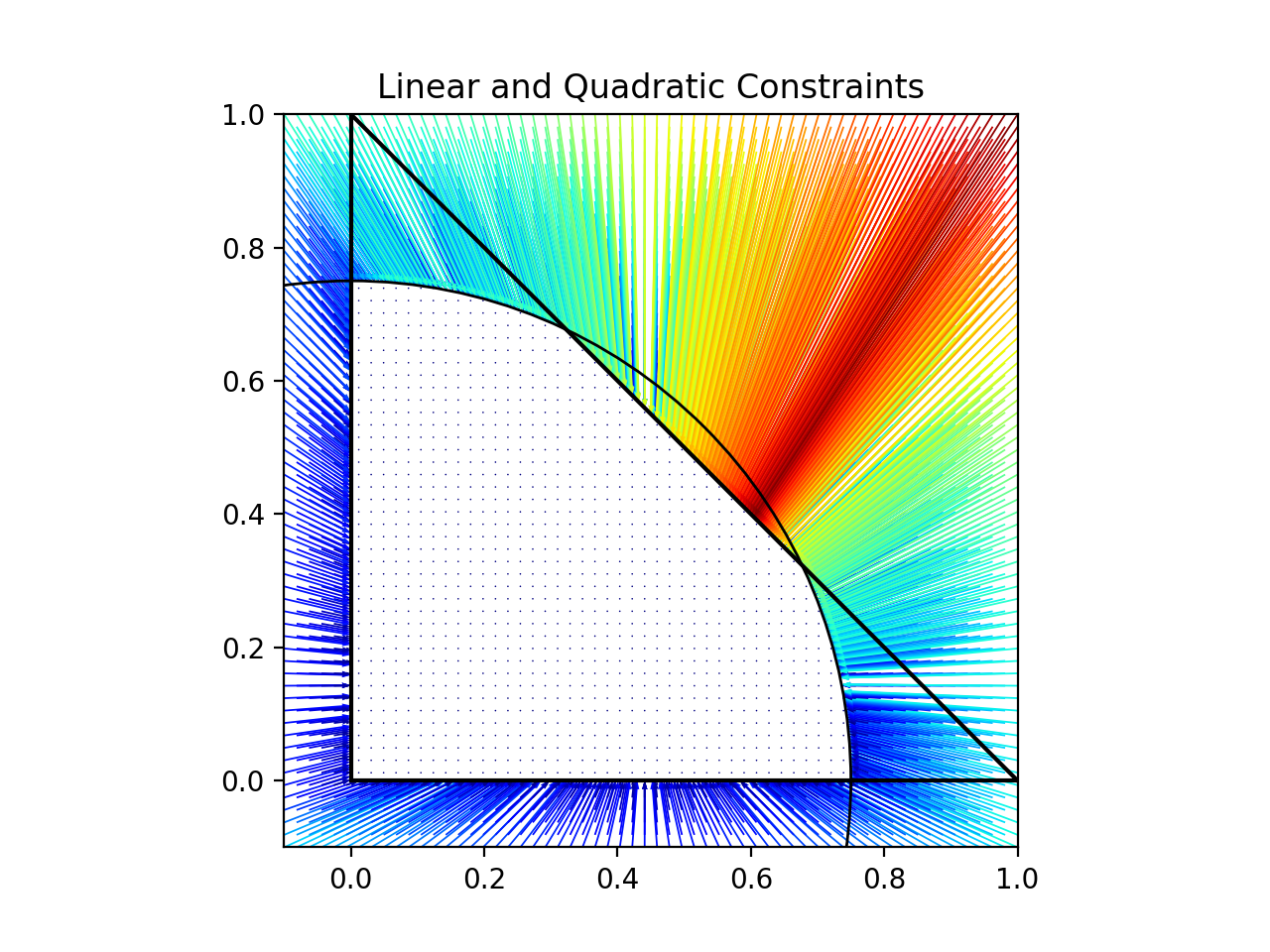A PyTorch implementation of ConstraiNet – differentiable output constrained neural network layer.
This repository includes a python package, containing:
ConstraiNetLayer– a neural network layer with (hard) constrained output;- Simple Feed-Forward
DenseConstraiNet– easy-to-use neural network with constrained output; test_runner– a simple testing platform for evaluation of different layer implementations on optimization tasks;- Utility methods for problems generation, etc.;
- Other less successful neural network layers & models for constraining output (considered during research).
The most successful models in the package are ConstraiNetLayer and DenseConstraiNet.
A ConstraiNetLayer is a layer that generates output vectors only inside the domain.
The domain is determined by a constraint set, which can be constructed with:
LinearConstraints(A, b)– linear inequality constraints of formA x <= b;LinearEqualityConstraints(A, b)– linear equality constraints of formA x == b;QuadraticConstraints(P, q, b)– quadratic inequality constraints of formx^T P_i x + q^T_i x <= b_i.
To create a ConstraiNetLayer just pass a list of constraints (also you can pass only one constraints instance, or a ConstraintSet):
from constrainet import (
LinearConstraints,
QuadraticConstraints,
ConstraiNetLayer,
DenseConstraiNet,
)
c_layer = ConstraiNetLayer(
constraints=[
# a triangle
LinearConstraints(
A=np.array([[-1., 0.], [0., -1.], [1., 1.]]),
b=np.array([0., 0., 1.]),
),
# a circle
QuadraticConstraints(
P=2.0 * np.eye(2, dtype=np.float64)[np.newaxis],
q=np.zeros((1, 2), dtype=np.float64),
b=(0.75 ** 2) * np.ones((1,), dtype=np.float64)
)
],
mode='center_projection', # or 'ray_shift'
)Here is an example of mapping created by this layer:

The layer c_layer will take vectors of dimension (batch_size, c_layer.n_inputs) as input
and will return constrained vectors of dimension determined by the given constraints.
Note, that c_layer.n_inputs depends on layer mode, which may be one of:
- 'center_projection' – then the number of inputs is the same as output vector dimension;
- 'ray_shift" – then the number of inputs is
n_features + 1.
To be able to easily handle different modes, we provide simple dense network with constrained output –
DenseConstraiNet.
It consists of a feed-forward network and a ConstraiNetLayer at the end,
and it automatically decides what number of inputs should be passed to the ConstraiNetLayer:
nn = DenseConstraiNet(
input_dim=input_dim, # number of input features
hidden_dim=config.nn_hidden_dim, # width of hidden layers
n_layers=config.nn_n_layers, # number of hidden layers
constraints=constraints, # list of constraints
mode='center_projection', # ConstraiNetLayer mode (another option: 'ray_shift')
)For convenience it is possible to pass multiple separate LinearConstraints, QuadraticConstraints in arbitrary order.
Currently the package is at the development stage, so it cannot be installed from PyPI.
We use Hatch for project management, but we believe that the package can be easily converted for use with any other tool, like Poetry.
-
Install Hatch.
-
Clone repository and go to the project directory.
git clone https://github.com/andruekonst/ConstraiNet.git cd ConstraiNet -
Create a Hatch environment.
hatch env create
-
Activate Hatch shell.
hatch shell
Now you can run any script that uses ConstraiNet.